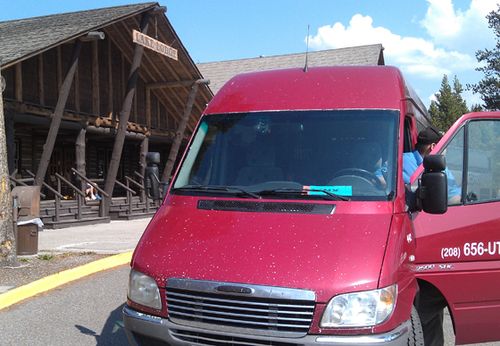
In our May issue we rounded up 12 amazing off-the-beaten path National Park adventures. Trekking into Yellowstone National Park (oh, you've heard of it?) didn't make the cut. But that doesn't mean you should avoid the╠ř3,472 square miles of alpine wonders that make up the world's first national park. What you should╠řavoid, however, is seeing it through your car windows, while stuck in park traffic.
“The park gets three million visitors each year, and they come mostly in the summer months,” says Kim Billimoria, communications manager for . Thankfully, visitors now have a to get around, and even get into, the park. The best part? It will act as your trail╠řchauffeur, opening up thru-hike options and access to multi-leg trips that you'd never be able to pull off in a car.
The words bus + Yellowstone might conjure up the notion of a tour bus, on which you'll be held hostage with a rigid, adventureless itinerary. This is different. The bus system, called Linx, isn't really new. It is made up of existing regional transit providers from the gateway communities and cities around the park. What's new (this is Linx's╠řsecond year of operation) is that the separate transit companies are working together to provide service to eight landmarks and popular destinations around the park. Their goal (aside from making money, it's not free but I'll provide fares below) is to provide a car-free option for visitors while also helping to cut down on traffic inside the park. ╠ř
“If we reduce traffic, itÔÇÖs not just about emissions savings. There are a lot of vehicle and wildlife collisions each year,” says╠řBillimoria. “So rather than trying to drive through a herd of bison or spending time trying to find a parking space, visitors can get on and off the bus” to reach their destinations.
You can jump off near a trailhead and hike to another part of the park, where a different bus can shuttle you back.╠ř
That goes for cyclists, too. When the service launched last summer, cyclists sometimes rode into the park from West Yellowstone and bussed back, or vice versa, she says. It'd be hard for a big group, but the buses generally don't have a problem accommodating cyclists in pairs or trios, she says. Calling the Linx service ahead of time, to ensure there's room on the particular bus you're hoping to hop, is the safest bet. This year Linx is running a study, sponsored by , to determine the feasibility of adding bike racks to the buses.
The June 15 to September 30 and fares are $20 for a day pass or $80 for a five-day pass. Either is unlimited, in terms of how many bus rides you're allowed to take, and tickets can be purchased online or at ticket booths in the park. The service runs May 15-June 14, and after October 1, but only through a reservation made 48 hours in advance, and the fares then are $25 for each leg.
So. How does one get to the park without wheels, in the first place? All the Linx transit providers link out to transit systems in nearby communities with airports, including Salt Lake City, Jackson, Idaho Falls, Bozeman, and Billings.╠ř
And don't worry, there's a bus stop right by Old Faithful.
–Mary Catherine O'Connor
╠ř
Related: Ditch Your Car, Find ║┌┴¤│ď╣¤═° With Transit & Trails